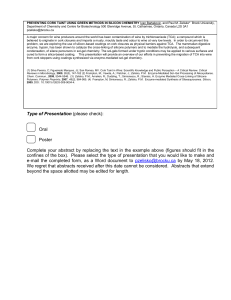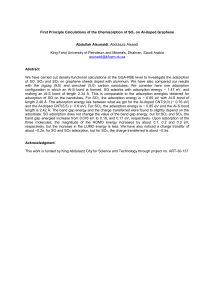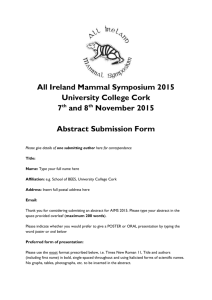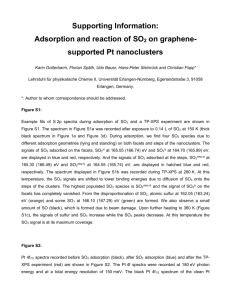Does sulphur dioxide adsorpion by cork could explain its
advertisement
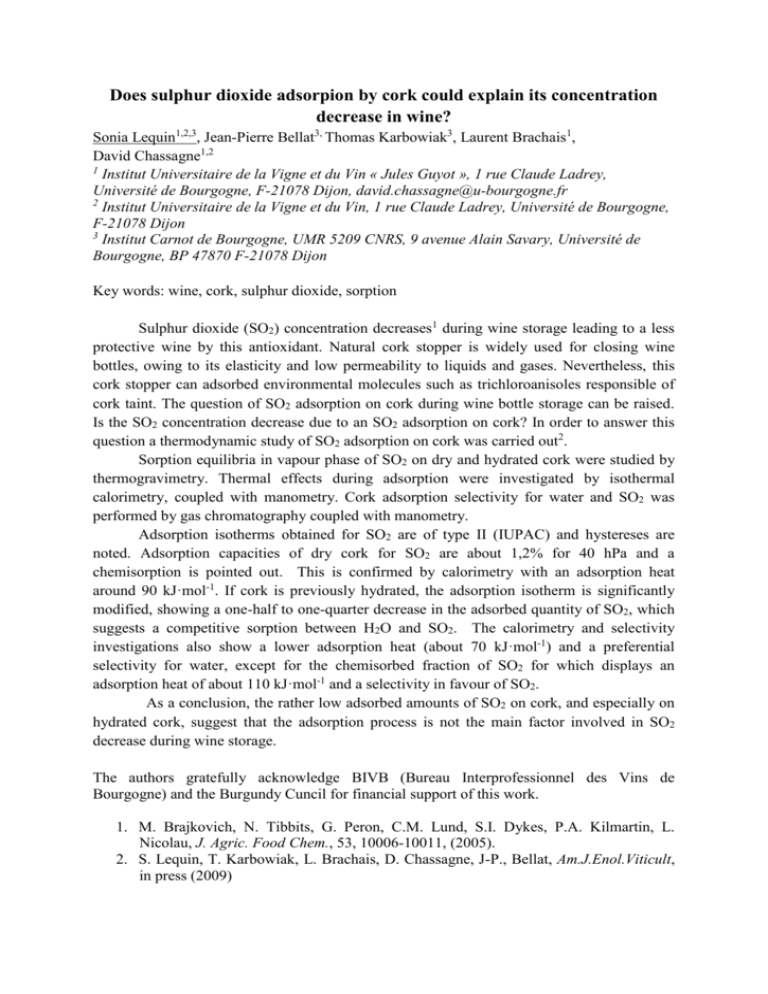
Does sulphur dioxide adsorpion by cork could explain its concentration decrease in wine? Sonia Lequin1,2,3, Jean-Pierre Bellat3, Thomas Karbowiak3, Laurent Brachais1, David Chassagne1,2 1 Institut Universitaire de la Vigne et du Vin « Jules Guyot », 1 rue Claude Ladrey, Université de Bourgogne, F-21078 Dijon, david.chassagne@u-bourgogne.fr 2 Institut Universitaire de la Vigne et du Vin, 1 rue Claude Ladrey, Université de Bourgogne, F-21078 Dijon 3 Institut Carnot de Bourgogne, UMR 5209 CNRS, 9 avenue Alain Savary, Université de Bourgogne, BP 47870 F-21078 Dijon Key words: wine, cork, sulphur dioxide, sorption Sulphur dioxide (SO2) concentration decreases1 during wine storage leading to a less protective wine by this antioxidant. Natural cork stopper is widely used for closing wine bottles, owing to its elasticity and low permeability to liquids and gases. Nevertheless, this cork stopper can adsorbed environmental molecules such as trichloroanisoles responsible of cork taint. The question of SO2 adsorption on cork during wine bottle storage can be raised. Is the SO2 concentration decrease due to an SO2 adsorption on cork? In order to answer this question a thermodynamic study of SO2 adsorption on cork was carried out2. Sorption equilibria in vapour phase of SO2 on dry and hydrated cork were studied by thermogravimetry. Thermal effects during adsorption were investigated by isothermal calorimetry, coupled with manometry. Cork adsorption selectivity for water and SO2 was performed by gas chromatography coupled with manometry. Adsorption isotherms obtained for SO2 are of type II (IUPAC) and hystereses are noted. Adsorption capacities of dry cork for SO2 are about 1,2% for 40 hPa and a chemisorption is pointed out. This is confirmed by calorimetry with an adsorption heat around 90 kJ·mol-1. If cork is previously hydrated, the adsorption isotherm is significantly modified, showing a one-half to one-quarter decrease in the adsorbed quantity of SO2, which suggests a competitive sorption between H2O and SO2. The calorimetry and selectivity investigations also show a lower adsorption heat (about 70 kJ·mol-1) and a preferential selectivity for water, except for the chemisorbed fraction of SO2 for which displays an adsorption heat of about 110 kJ·mol-1 and a selectivity in favour of SO2. As a conclusion, the rather low adsorbed amounts of SO2 on cork, and especially on hydrated cork, suggest that the adsorption process is not the main factor involved in SO2 decrease during wine storage. The authors gratefully acknowledge BIVB (Bureau Interprofessionnel des Vins de Bourgogne) and the Burgundy Cuncil for financial support of this work. 1. M. Brajkovich, N. Tibbits, G. Peron, C.M. Lund, S.I. Dykes, P.A. Kilmartin, L. Nicolau, J. Agric. Food Chem., 53, 10006-10011, (2005). 2. S. Lequin, T. Karbowiak, L. Brachais, D. Chassagne, J-P., Bellat, Am.J.Enol.Viticult, in press (2009)
